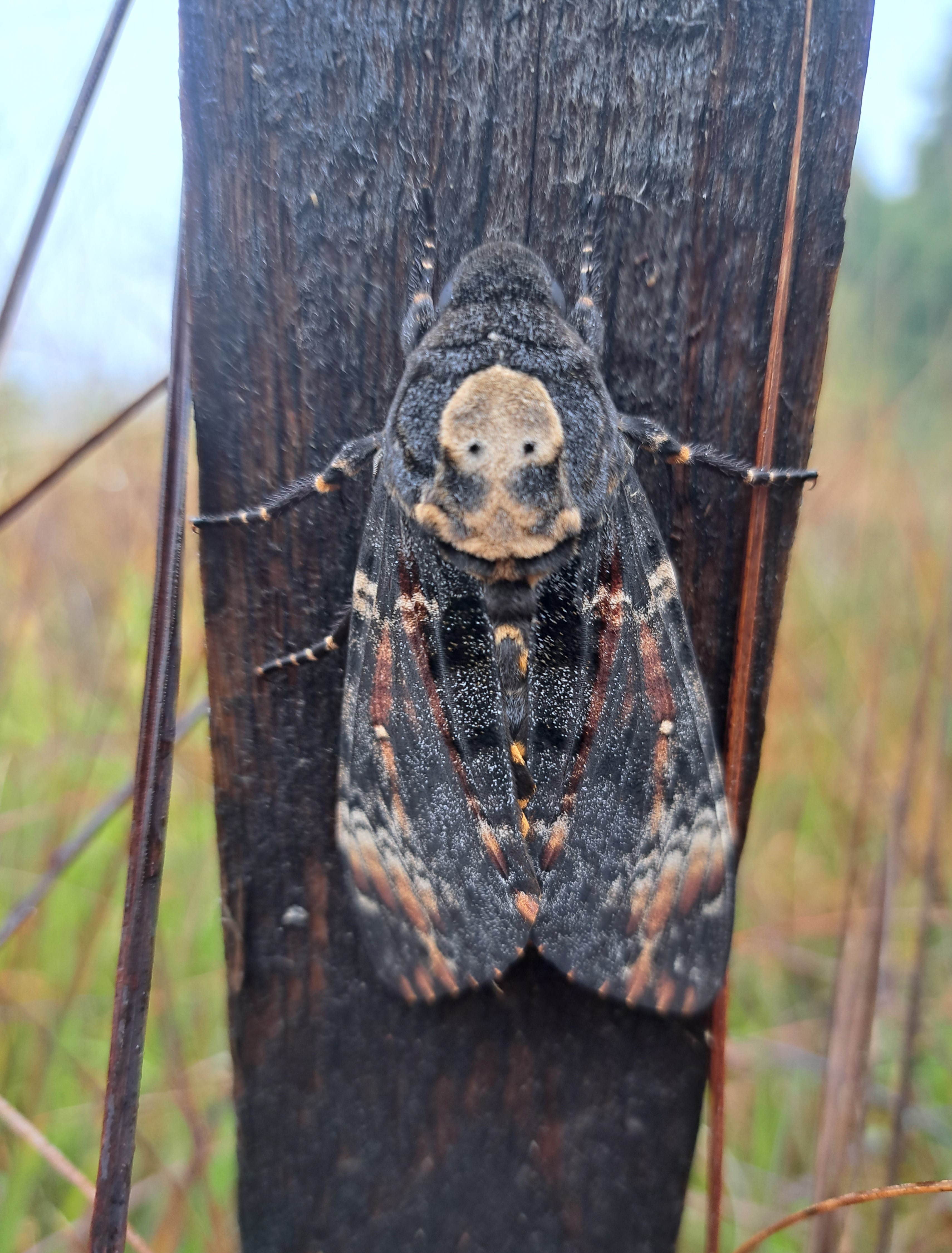The death’s head moth is a large nocturnal moth from the family of hawk moths, with a wingspan of approximately 12 cm. It was named after the easily recognisable white pattern on its thorax, resembling a human skull.
In their larval stage, they feed on plant species from over 100 families, most commonly potato, olive and oleander leaves, as well as cannabis and belladonna leaves. The adults feed on flower nectar, and even raid beehives for honey in case of food shortage. If in danger, they produce a squeaking sound and reveal their abdomen of an intense yellow colour. They are widespread in South Europe and North Africa, and known as fast and strong flyers, allowing them to cross up to five thousand kilometres in just five days. They are particularly sensitive to natural toxins, pesticides and herbicides, making them a very rare sight out in nature.
The preserved environment of the Plitvice Lakes National Park provides the ideal habitat for this species. Although rarely spotted, they are still an important part of the Park’s fauna.


